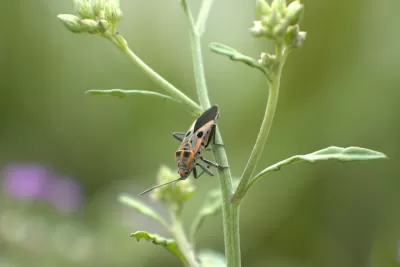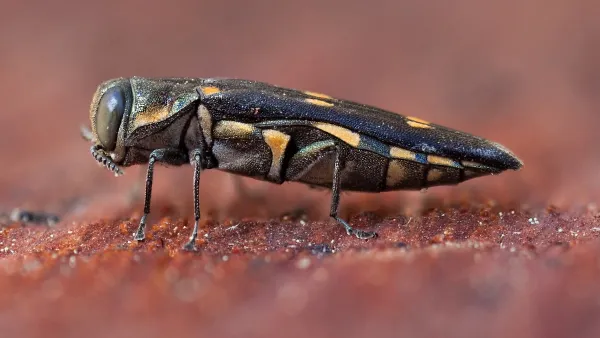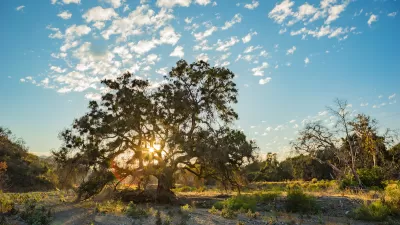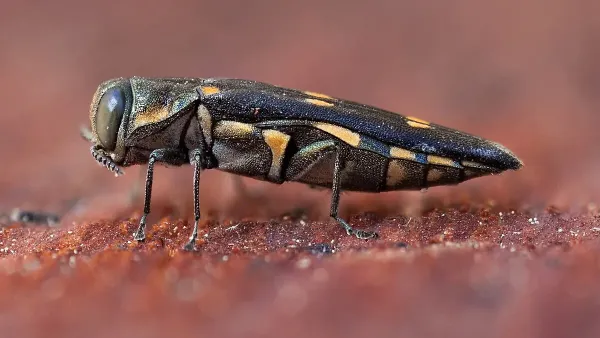Goldspotted oak borers are damaging California's oak trees, increasing wildfire risks and causing ecological and economic losses, with mitigation focused on local firewood sourcing and tree management.

Goldspotted oak borers (GSOBs), invasive beetles originating from Arizona and Northern Mexico, have been causing significant damage to oak trees in California. These beetles likely arrived in the state in the early 2000s through infested firewood. Female GSOBs lay eggs in the bark of susceptible oak trees, and the resulting larvae bore into the tree's living tissue, disrupting the flow of water and nutrients. This activity damages or kills the tree, and as the larvae mature into adult beetles, they emerge in the spring, continuing the destructive cycle.
The increasing mortality of oak trees due to GSOB infestations has led to a rise in fuel loads, exacerbating wildfire risks in California's already fire-prone landscape. The loss of oaks also has significant economic, ecological, cultural, and aesthetic impacts on public, private, and tribal lands in Southern California. The dead and dying trees contribute to the overall danger during hot and dry wildfire seasons, making the management of this invasive species crucial for the region's safety and environmental health.
To mitigate the spread of GSOBs, experts like forest entomologist Beth Kyre from the US Forest Service emphasize the importance of sourcing firewood locally and adhering to firewood guidelines, encapsulated in the slogan "burn it where you buy it." Additionally, removing heavily infested trees and using chemical protection on unaffected trees can help manage and reduce the infestation. Public awareness and adherence to these practices are essential to control the spread of these invasive beetles and protect California's oak trees.
FULL STORY: Goldspotted oak borers are attacking trees in California

Planetizen Federal Action Tracker
A weekly monitor of how Trump’s orders and actions are impacting planners and planning in America.

Maui's Vacation Rental Debate Turns Ugly
Verbal attacks, misinformation campaigns and fistfights plague a high-stakes debate to convert thousands of vacation rentals into long-term housing.

Restaurant Patios Were a Pandemic Win — Why Were They so Hard to Keep?
Social distancing requirements and changes in travel patterns prompted cities to pilot new uses for street and sidewalk space. Then it got complicated.

In California Battle of Housing vs. Environment, Housing Just Won
A new state law significantly limits the power of CEQA, an environmental review law that served as a powerful tool for blocking new development.

Boulder Eliminates Parking Minimums Citywide
Officials estimate the cost of building a single underground parking space at up to $100,000.

Orange County, Florida Adopts Largest US “Sprawl Repair” Code
The ‘Orange Code’ seeks to rectify decades of sprawl-inducing, car-oriented development.
Urban Design for Planners 1: Software Tools
This six-course series explores essential urban design concepts using open source software and equips planners with the tools they need to participate fully in the urban design process.
Planning for Universal Design
Learn the tools for implementing Universal Design in planning regulations.
Heyer Gruel & Associates PA
JM Goldson LLC
Custer County Colorado
City of Camden Redevelopment Agency
City of Astoria
Transportation Research & Education Center (TREC) at Portland State University
Jefferson Parish Government
Camden Redevelopment Agency
City of Claremont





























